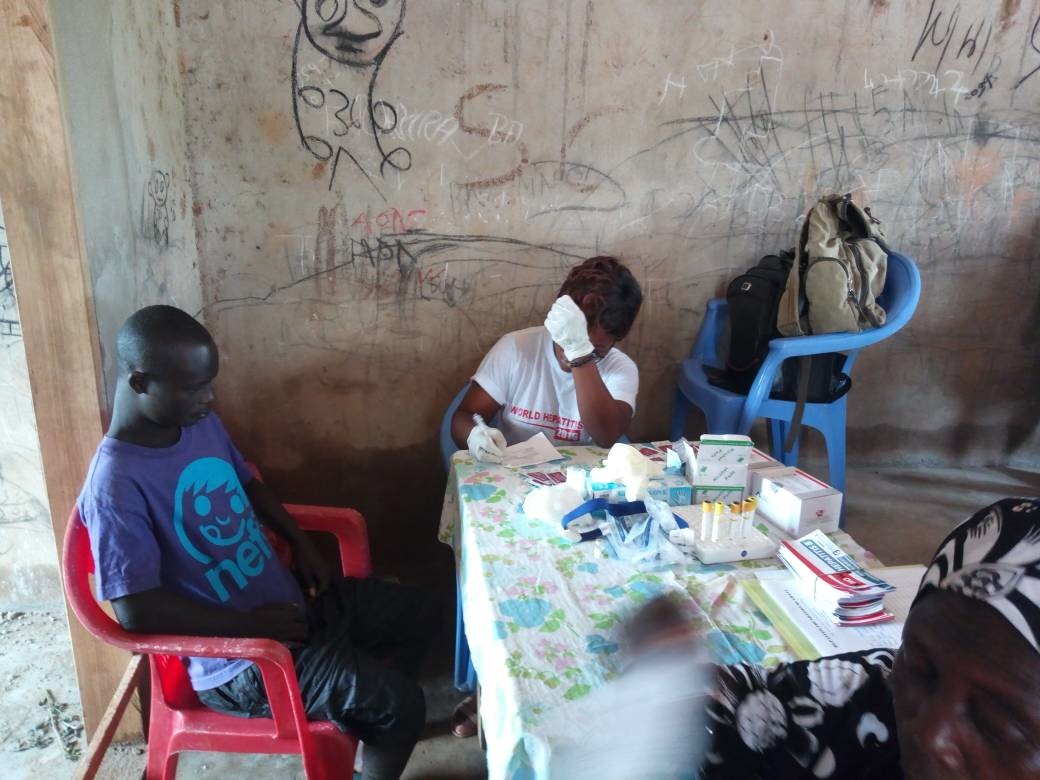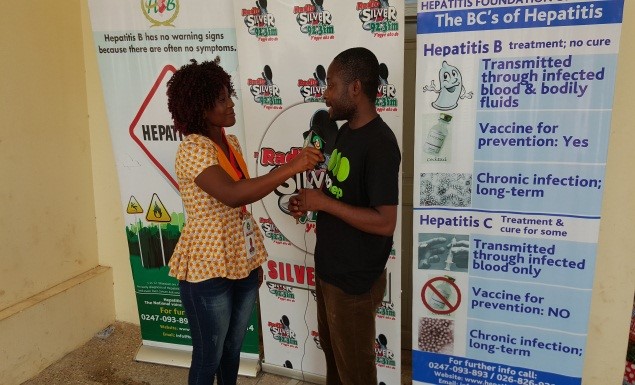Welcome to “Journey to the Cure.” This is a web series that chronicles the progress at the Hepatitis B Foundation and Baruch S. Blumberg Institute towards finding the cure for hepatitis B.
In the fourth episode (part 2), Kristine Alarcon, MPH sits down with Aejaz Sayeed, PhD, Assistant Professor at the Baruch S. Blumberg Institute, to talk about his research in liver cancer. For any questions about hepatitis B, please email info@hepb.org.
Disclaimer: The information provided in this audio post is not intended to serve as medical advice of endorsement of any product. The Hepatitis B Foundation strongly recommends each person discuss this information and their questions with a qualified health care provider.
Edited by:
Kristine Alarcon, MPH
Special thanks:
Samantha Young
Music:
Modern – iMovie Library Collection
Script:
Welcome to “Journey to the Cure!” Every month, we’ll sit down with scientists from the Hepatitis B Foundationand the Baruch S. Blumberg Instituteto talk to you about hepatitis B and efforts to find a cure for hepatitis B. There’s still a long way to go, but we’re here to walk you through our journey.
Kristine Alarcon, MPH:
Can you tell me about your research?
Aejaz Sayeed, PhD:
That’s an interesting question. I’vespent a lot of time pursuing breast cancer and prostate cancer. I just started working on the liver cancer. There are millions of people who are pursuing cancer research, but the challenge is that we have done a lot of progress in some cancers, but some cancers, still, we do not have a handle on. For example, we have done a lot of progress in breast and prostate cancer. We have not done much in pancreatic and liver cancer. And, the five-year survival rates of breast and prostate and other cancers have drastically increased, but we have not done much of a progress in pancreatic or a specific form of brain cancer or pancreatic cancer or liver cancer. The problem, again, is that we’re not able to detect the disease at an early stage, and if we had a good set of biomarkers available, there’s a good opportunity, there’s a good chance that we should be able to control these diseases as well.
Kristine Alarcon, MPH:
What attracted you to studying liver cancer?
Aejaz Sayeed, PhD:
I’ve been working on breast cancer and prostate cancer, so in liver cancer, I want to use the tools and techniques, which I used in breast and prostate cancer. That’s why there’s that desire to use the similar strategies, which I used in breast and prostate cancer to discover and characterize markers. That’s why I’m still setting up collaborations with transplant surgeons because liver cancer is treated generally by either resecting the tumor or transplanting the liver. The liver is such an important organ that you cannot really take the liver away. You need the liver. Transplanting the liver is another strategy of treating these patients, so, yes, it is basically that desire that we have more biomarkers, and I can use the knowledge that I gained in breast and prostate to recapitulate the same kind of events, so that we can make a dent.
Kristine Alarcon, MPH:
Yeah; that’s so cool.
Aejaz Sayeed, PhD:
Thank you.
Kristine Alarcon, MPH:
Well, thank you for joining us on this episode of “Journey to the Cure.” Please join us next time for our next episode. Thank you for joining us!
Aejaz Sayeed, PhD:
Thank you!







 Hepatitis B free screening and education were held at Ketu South, a community in the Volta region. A total of 244 persons were screened for hepatitis B. In all, 6 people tested positive. They were counselled and referred to the district hospital for proper care and treatment.
Hepatitis B free screening and education were held at Ketu South, a community in the Volta region. A total of 244 persons were screened for hepatitis B. In all, 6 people tested positive. They were counselled and referred to the district hospital for proper care and treatment.
 This special event began with a health walk through the streets in the Sekondi Komfoase area and followed with a hepatitis health talk and screening. Most of the people were afraid to come and do the hepatitis B and C tests because of some common perceptions on the radio and TV. I was able to share my family story with them, and that helped some of them come forward to do the test. The screening continued the next day at Home Church in Takoradi. Overcoming misperceptions about hepatitis B is very challenging – but we were able to screen179 persons, and are following up with all of those who tested positive.
This special event began with a health walk through the streets in the Sekondi Komfoase area and followed with a hepatitis health talk and screening. Most of the people were afraid to come and do the hepatitis B and C tests because of some common perceptions on the radio and TV. I was able to share my family story with them, and that helped some of them come forward to do the test. The screening continued the next day at Home Church in Takoradi. Overcoming misperceptions about hepatitis B is very challenging – but we were able to screen179 persons, and are following up with all of those who tested positive.





